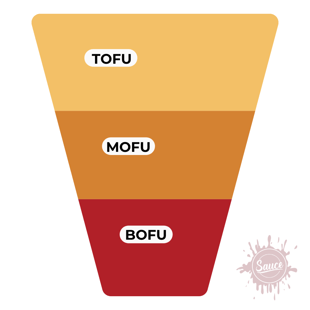Facebook vs. Google Ads: Key Insight from Experts You Can Use Right Now
Your customers are using Facebook and Google every single day to browse, search, and discover. But which one is best for your business? The goal of this blog is to present you with helpful information that guides you towards smarter, informed decisions about basic digital advertising.
But before asking which platform is best for your business, it’s important to know your answer to these two questions:
- What's the best way to reach my customers in their buying journey?
- Which platform fits my budget?
Digital advertising can be overwhelming. There is a lot to keep track of, understand, and strategize. That’s why it’s best to start small and simple. Learning the basics at the start saves you a lot of time, frustration, and money in the long run.
Facebook vs. Google Ads: which one should you choose? In this blog, discover the difference between Facebook and Google Ads, the marketing funnel and its importance to your ads strategy, and how a smart budget informs a successful advertising campaign.
What is Facebook Ads?
Facebook advertising is a service that allows you to run ads, target audiences, and collect information in the Facebook ecosystem. You can use Facebook’s Ads Manager tool to reach audiences based on very specific metrics, such as:
- Location targeting from regional to local
- Profile data and user interests
- User demographics
- Device usage
Facebook is more than just Facebook’s own social network. It’s an interconnected multiverse of communication and content services that are free to use by billions of people around the world. In fact, Facebook owns the four most downloaded apps of the last decade.
Facebook advertising is effective for creating awareness, increasing post engagement, nurturing leads, driving traffic to your page or external website, and increasing the reach of your content..
What is Google Ads?
Google Ads is a paid advertising platform that works like an auction. Every time a user searches a keyword you’ve bid on, an automated auction determines whether your ad is placed or not.
Keywords are essential to a functional Google Ads strategy. Google offers the tools to automatically generate actionable keywords based on a website. This tool is called a Keyword Planner, and it’s essential to form the basis of any strategy.
Each keyword on Google Ads is assigned an estimated bidding value, from lowest to highest. Bid too low, and you risk losing an ad placement. Bid too high, and you’ll spend too much money on an ad placement you didn’t need to spend that much money on.
Every time someone clicks on your ad, you are charged for that click. You’ve heard of pay-per-click ads, or PPC. PPC ads are very common and widely used across disciplines and industries. Google Ads also offers cost-per-thousand-impressions (CPM) ad placements. Whichever payment structure you use is dependent on your industry, budget, and advertising scale.
Google Ads thrive with websites that have content that appeals to every stage of the marketing funnel. Strong websites have strong keywords. Strong keywords mean more successful Google Ads. A stronger website translates to higher conversion rates, lower bid costs, and better leads.
Google ads are ideal to drive more qualified traffic to your website or online store, especially if the targeted keywords show the prospects’ desire to make a purchase. Think about it: if people are searching for a specific service or product, they’re already considering purchasing it, or in the very least interested in learning more.
The marketing funnel
A successful advertising campaign is more than choosing a channel, writing some copy, and paying for placement. It’s about developing a data-driven strategy that is simple and replicable.
For a customer to consider you, they need to be aware of you. For the customer to choose you, they need to consider you.
Sure, everyone has their own opinion. If you’re a niche business, you’ll likely possess a greater understanding of your ideal customer than anyone else. But that doesn’t mean you rely on that understanding to run a campaign. If anything, it’s a great starting point for an effective strategy.
We know you’re an industry professional. But sometimes, it’s tough to find customers. Even more so, it’s hard to figure out exactly what you’re supposed to say and when. That’s what the marketing funnel is for!

The marketing funnel is a tiered customer journey from the discovery of a product to purchase. It’s a data-driven system that increases sales, gathers actionable information, and identifies areas of opportunity in your current sales flow and communication strategy.
The funnel can be broken down into three categories: top, middle, and bottom.
Top: The top of the funnel, or TOFU, is the awareness-generating portion of your marketing. This is where your customer discovers they have an issue to solve. The tricky part is expressing value by showing that you understand their problem and offer a better solution than your competitors.
Middle: The middle of the funnel, or MOFU, is the consideration stage of a customer’s buying journey. At this point, your customer understands their issue and is stuck between a few different options to solve it. This is where you nurture your customer and guide them to an informed decision.
Bottom: The bottom of the funnel, or BOFU, is the conversion stage of the buying journey. This means you’ve successfully converted a lead into a sale. That sale is the beginning of a long-term, nurturing relationship filled with future marketing funnels to complete.
The funnel and communication
If you build your messaging and strategy around the marketing funnel, you meet your customers where they are instead of waiting for them to come for you. This is an inbound marketing approach that engages and delights beyond a simple sale.
The advertising goal
What do you want to accomplish with your advertising campaign? Knowing your goal ahead of developing a strategy and running a campaign keeps you focused on a single controlling idea or goal. Developing each aspect of an advertising strategy around a common goal is the path to a successful advertising campaign.
Your Google Ads goal
Google Ads is the premiere demand capture advertising platform. If a potential customer is already searching for your product, then they are on a buying journey and likely displaying purchase intent. Purchase intent is the probability a customer buys your product or service. You have the power to influence that intent in your direction. That’s why you form ad copy and bid on relevant keywords around your customer’s stage in the marketing funnel!
Google Ads is perfect to meet your customers where they are, not where you want them to be. Think of it as guiding your customers to a common goal. Sure, in the end, a lead converts into a sale. But the general goal of Google Ads isn’t to sell a product— it’s to develop a productive, meaningful relationship between a customer and a business. Selling products is only part of that process.
Your Facebook Ads goal
Facebook Ads, on the other hand, is ideal for reaching audiences at the top of the funnel. Think about product awareness, high-level branding, or key service information. If your initial advertising goal falls within these categories, Facebook Ads is the channel for you.
Facebook Ads is a worthwhile advertising investment, even if Google Ads is better at converting leads. That’s because Facebook offers granular targeting tools that offer exposure and clicks for a lower cost than competitors. The more you hone your audience, the more valuable Facebook’s advertising channel can be for your business.
Why not both?
It’s clear Facebook and Google offer similar tools at different stages of the buying journey in the marketing funnel. This is the key tip you need to remember if you’re running your own advertising campaign or hiring someone else to manage it for you: do not rely on a single advertising channel. Diversify! You know you’re not supposed to put all your eggs in one basket. The same is true for advertising. Use platforms, like Facebook and Google, to target your customers at every stage of their buying journey.
Here’s an example of this process in action:
Say you’re a company that sells hair restoration products. I’m using this example because as a young adult male, my social feeds are inundated with hair loss and restoration products. These companies are trying to build awareness about their product, service, and mission. These companies do this by targeting my age, location, and general interests through Facebook. Since I’m writing about it in this blog, I’d say their Facebook Ads strategy is a success.
Then, the next step in that process is for a Facebook user to search that hair care company or product on Google or their preferred search engine. That’s where a paid Google Ads strategy guides and informs the potential customer to a website that further illustrates the value of the product and service, as well as offering a clear call to action, or CTA, to purchase or contact the company.
Leverage your marketing and advertising channels at every stage of the customer’s buying journey. You do this by setting a goal, identifying the right platforms, and creating the best copy for the job.
Budget
Your budget goal, regardless of advertising channel, is to maximize your return on investment. How you measure that return is key in determining a successful strategy. That’s why, as you strategize, you should develop key performance indicators, or KPIs, that inform every aspect of your advertising strategy.
For instance, if your needs and data point to Google Ads as an optimal choice for your strategy but you lack the financial bandwidth to afford actionable keywords, then that needs to be taken into consideration. Say you have a $4,000 budget for a six-week digital advertising campaign. If your ideal keywords cost over $20 per click, that budget disappears very fast, limiting your campaign success before the start.
Setting a budget and working within it is key to developing, strategizing, and executing a successful advertising strategy. We’re not saying choose a cheap channel that fails to meet your KPIs. But we are suggesting that you identify a realistic budget that maximizes your return on investment.
Here is a piece of advice we don’t share with everyone: keep your profit margins on a sale or service in mind as you determine your advertising budget. This is a great KPI to determine a successful advertising campaign.
Get the Most Out of Your Digital Ads Efforts with Sauce Agency
There is a lot to keep track of, understand, and strategize. That’s why our team of strategists works with our clients to develop digital advertising that captures leads, boosts sales, and builds sustainable awareness. Interested in discovering how a growth agency like Sauce Agency can improve your ads and increase your revenue? Schedule a call with a certified Growth Guide to learn more today.

.webp?width=12693&height=4513&name=Sauce%20Logo%20Dark%20Ht%20(1).webp)

.webp?width=180&height=64&name=Sauce%20Logo%20Dark%20Ht%20(1).webp)










